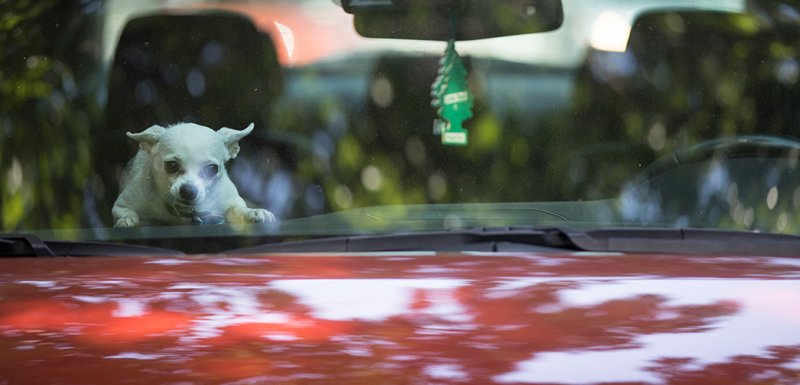As summer unfolds and temperatures climb across Ontario, the Ontario Provincial Police (OPP) is issuing a crucial reminder to the public about the potentially fatal consequences of leaving children or pets unattended in parked vehicles. What may seem like a brief errand or a momentary lapse in judgment can quickly turn into a life-threatening situation due to the rapid increase in temperature inside a car, even on seemingly mild days.
The OPP's warning underscores the critical need for heightened awareness and responsible behavior to protect the most vulnerable members of our communities. Understanding the dangers and knowing how to respond can make the difference between life and death.
The Rapid Rise of Interior Temperatures: A Deadly Trap
It's easy to underestimate the speed and severity of heat buildup inside a vehicle. Even on a pleasant day, the interior of a car can become 20 degrees Celsius hotter than the outside temperature within just 10 minutes. This rapid escalation creates a dangerous environment, particularly for children and pets, who are less able to regulate their body temperatures effectively.
Children, with their smaller body mass and developing thermoregulatory systems, are especially susceptible to heatstroke. Pets, particularly dogs with their fur coats and limited ability to sweat, are also highly vulnerable. Leaving them in a hot car, even with the windows slightly open, creates a perfect storm for heatstroke, brain damage, and tragically, death.
The dangers are not limited to scorching summer days. Even on days with moderate temperatures, the greenhouse effect inside a vehicle can quickly create a deadly environment. The sun's rays penetrate the windows, trapping heat and causing the temperature to soar to dangerous levels.
Preventive Measures: Protecting Our Vulnerable Ones
Prevention is always the best course of action. Here are some key steps to ensure the safety of children and pets:
- Never leave a child or pet unattended in a parked vehicle, even for a few minutes. The risks simply outweigh any perceived convenience.
- Make it a habit to check the back seat before locking your car. This simple practice can prevent accidental lock-ins, especially for children who may be sleeping or quietly playing.
- Place a reminder item in the back seat. Keep your purse, briefcase, or cellphone in the back seat as a visual reminder to check for children or pets before leaving the vehicle.
- If you see a child or pet alone in a hot car, take immediate action. Call 911 immediately. Your quick response could save a life.
- Educate others about the dangers of leaving children or pets in hot cars. Share this information with friends, neighbors, and family members. A simple reminder can make a significant difference.
Understanding the Risks: The Case for Vigilance
The OPP's warning highlights the potential for severe consequences stemming from negligence. Heatstroke is a medical emergency that can cause permanent brain damage, organ failure, and death. Children and pets are particularly susceptible to the condition, as they lack the capacity to effectively communicate their distress or escape the suffocating heat.
The OPP emphasizes that even cracked windows offer minimal relief. The temperature inside a vehicle can still rise rapidly to dangerous levels in a short period of time, and relying on this as a safety measure is a grave error.
Taking preventive measures is not merely a suggestion; it is a moral imperative. By adopting these practices, we contribute to a safer environment for our children and pets, safeguarding them from the potentially deadly effects of vehicular heatstroke.
What to Do If You See a Pet in a Hot Car
Seeing a pet in distress inside a hot car can be a distressing situation. It's crucial to act quickly and responsibly. Here are the steps you should take:
- Assess the Situation: Quickly evaluate the animal's condition. Is the animal showing signs of distress, such as excessive panting, drooling, lethargy, or disorientation?
- Call 911 Immediately: Reporting the situation to emergency services is the most crucial step. Provide them with the location of the vehicle, a description of the animal, and its condition.
- Attempt to Locate the Owner: If possible, try to find the vehicle's owner. Check nearby businesses or ask people in the area if they know who the car belongs to.
- Document the Situation: If possible, take photos or videos of the animal in distress and the vehicle's license plate. This documentation can be helpful for authorities.
- Stay on Scene: Wait for the police or animal control to arrive. They are equipped to handle the situation safely and legally.
Know the Law: Ontario's PAWS Act
Ontario has laws in place to protect animals in distress, including those left in hot cars. The Ontario Provincial Animal Welfare Services (PAWS) Act grants specific individuals the authority to intervene in these situations.
Under the PAWS Act, police officers, First Nations constables, and authorized inspectors have the authority to enter vehicles to remove animals in distress. These officials are trained to assess the situation, safely remove the animal, and provide necessary care.
However, the PAWS Act stipulates that members of the public are generally advised to contact authorities rather than act themselves. This recommendation is in place to protect both the public and the animal. Breaking into a vehicle can have legal repercussions, and untrained individuals may inadvertently harm the animal during the rescue attempt.
While the impulse to help is admirable, it's crucial to follow legal protocols and rely on trained professionals to handle these situations. By contacting authorities and providing them with the necessary information, you can ensure that the animal's safety is handled appropriately and within the bounds of the law.
Collective Responsibility: Creating a Safer Community
Protecting children and pets from the dangers of hot cars is a shared responsibility. By understanding the risks, taking preventive measures, and knowing how to respond in an emergency, we can work together to create a safer community for all. The OPP's reminder serves as a call to action, urging us to be vigilant, responsible, and compassionate in our interactions with vulnerable members of our society. Let's commit to prioritizing their safety and ensuring that no child or pet suffers needlessly in a hot car.
Word Count: 1,103

Alex Moss
Alex Moss is a digital marketing professional and SEO consultant, focusing on technical and structural SEO along with product development. With more than six years of experience in various facets of digital marketing, he has assisted brands of all sizes in establishing and enhancing their online presence, as well as fostering increased product loyalty.






Leave a comment?
To write a comment, you must login or register first.